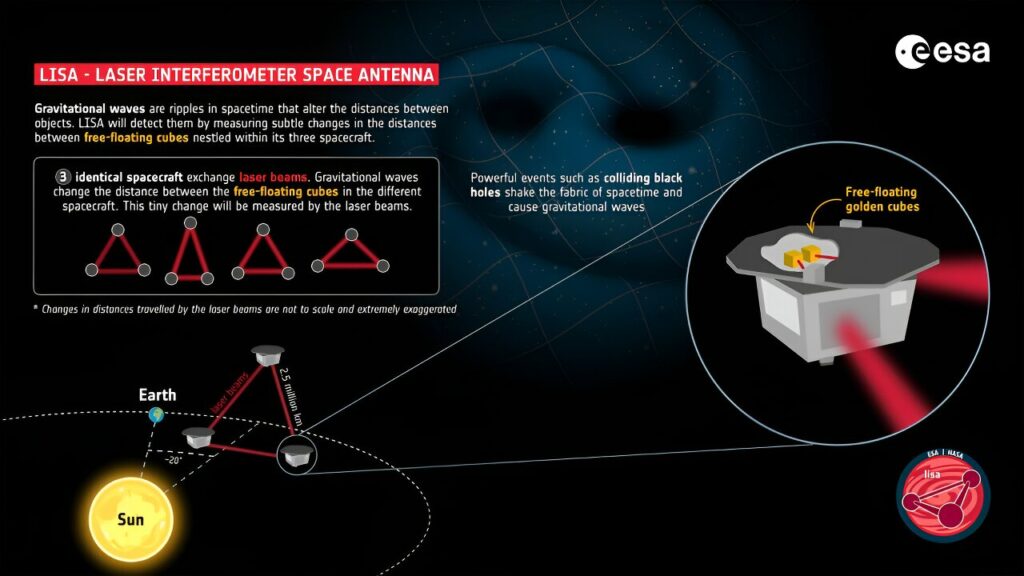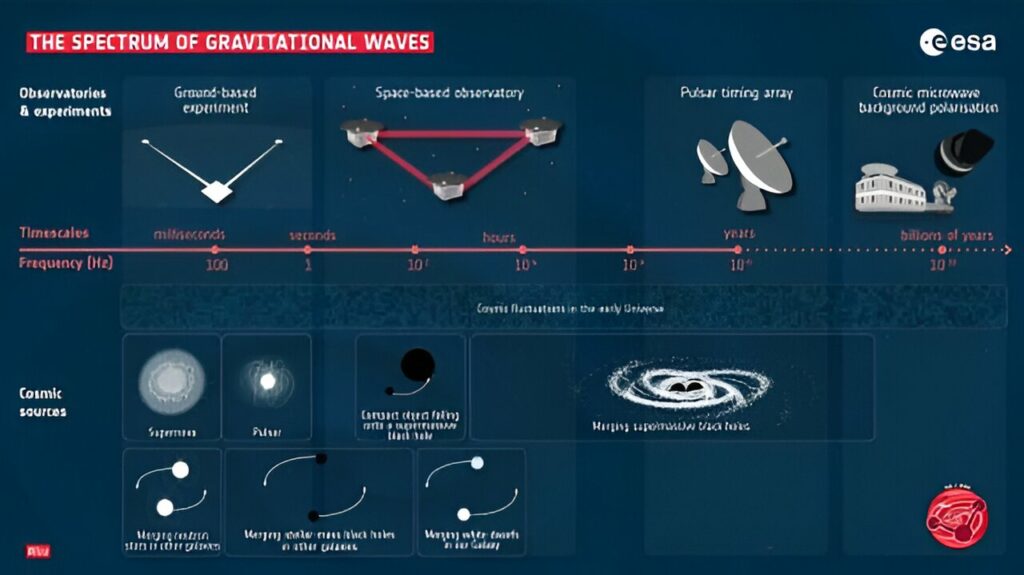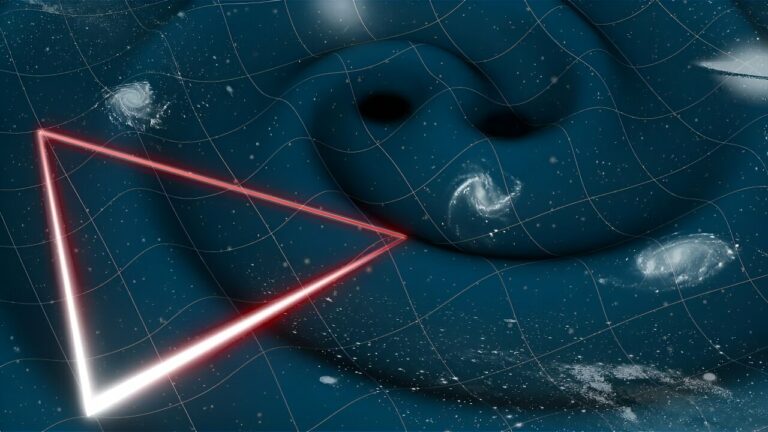Approval Granted for the Space-Based Gravitational Wave Observatory LISA
The European Space Agency has given a significant boost to the field of gravitational wave research. The Laser Interferometer Space Antenna (LISA), which has been in development since the 1980s, has now been officially approved for planning and construction by the agency’s science program committee. This milestone means that gravitational wave astronomers can now progress towards capturing valuable information about gravity waves from space.
The LISA observatory, which was proposed around a decade after the initial concept, has already undergone a “pathfinder mission” to test its primary design. Now, it is set to become a fully operational system consisting of three spacecraft, scheduled for launch in 2035. This development is expected to bring about a revolutionary change in the study of gravitational waves.
The spacecraft constellation will be strategically positioned in an Earth-like heliocentric orbit, forming a triangle configuration. These spacecraft will be interconnected by laser beams, spanning a distance of 2.5 million kilometers in space. These laser beams will serve as the primary detectors of gravitational waves. As a wave passes through, it will cause a change in the length of each laser “arm.”
Equipped with sophisticated instruments, the spacecraft will record these changes and transmit the data back to Earth for analysis. By analyzing the differential changes in the length of each arm, scientists will gain crucial insights into the objects that generated the gravitational waves. If all goes according to plan, LISA will become the first space-based observatory solely dedicated to the study of these ripples in the fabric of spacetime.

The next steps
The formal step known as “adoption” signifies the decision to proceed with the development of LISA. This decision confirms that the technology, mission concept, and timeline are deemed suitable. Consequently, the agency can now proceed with the construction of the spacecraft and its instrumentation. Subsequently, the agency is now able to seek and choose contractors for the fabrication process. The design and assembly phase could potentially commence as early as January 2025.
Lead project scientist Nora Lützgendorf acknowledges the challenges that lie ahead in the development of LISA. She emphasizes that LISA is an unprecedented endeavor, utilizing laser beams across vast distances to detect gravitational waves originating from events involving celestial objects of star-like proportions. These events include supernova explosions and the merging of extremely dense stars and stellar-mass black holes. In order to advance the field of gravitational studies, venturing into space is imperative. LISA’s laser signals will travel significant distances, allowing for the detection of gravitational waves at lower frequencies than what is achievable on Earth. This will unveil events of a different magnitude, stretching back to the earliest moments of the universe.

Protecting LISA from outside influences in space
Space poses unique challenges for spacecraft missions, and LISA encounters similar issues to those faced by LIGO and other ground-based instruments. Unlike LIGO, which is affected by the vibrations caused by passing trucks, LISA doesn’t have to worry about such disturbances in space. However, it does have to contend with non-gravitational-wave forces like light pressure and the solar wind. To overcome these challenges, scientists have devised ingenious spacecraft designs.
Each of the three LISA spacecraft will be equipped with telescopes, lasers, and test masses made of gold-coated gold and platinum. To shield the test masses from external influences that could disrupt their position, they will be allowed to float freely inside the spacecraft. The outer hulls of the spacecraft will absorb any external disturbances. Additionally, thrusters will be used to precisely adjust the spacecraft’s position and ensure that the test masses only experience the desired gravitational waves. As a result, LISA is expected to provide exceptionally accurate and reliable gravitational wave data from distant celestial objects and cosmic events.
LISA’s gravitational wave targets
The mission at hand is a complex one, aiming to capture the ripples in spacetime that occur when massive objects collide. This includes the mergers of supermassive black holes at the centers of galaxies. Within our own galaxy, LISA will have the capability to detect the mergers of white dwarfs or neutron stars. The data collected by LISA will provide astronomers with precise information regarding the distances and locations of these events.
Oliver Jennrich, the project scientist for LISA, expressed the significance of this endeavor by stating, “For centuries, we have studied the cosmos by observing light. However, the addition of gravitational wave detection introduces an entirely new dimension to our understanding of the universe.” He further compares the current state of astrophysics missions to watching a silent movie, while capturing spacetime ripples with LISA will be a transformative game-changer, akin to the addition of sound to motion pictures.
One particularly thrilling possibility that LISA could unlock is the ability to detect the initial moments following the Big Bang. This is due to the fact that gravitational waves from this pivotal event carry valuable information about distance and intensity. Additionally, LISA’s data will aid astronomers in measuring the expansion rate of the universe over time. If all these aspirations come to fruition, it will serve as compelling evidence for the unique and invaluable role of gravitational waves in cosmic measurements.
This article is republished from PhysORG under a Creative Commons license. Read the original article.
Do not forget to share your opinion with us to provide you with the best posts !





0 Comments